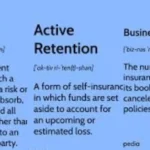Cremation is an option many families consider when making final arrangements for their loved ones. It is a dignified and cost-effective alternative to traditional burial, but one of the most commonly asked questions is, how long does it take to cremate a body? The answer depends on several factors, including the physical cremation process, legal requirements, and administrative procedures.
This article provides a detailed explanation of the cremation timeline, breaking it down into stages to help you understand the process better.
What Happens During Cremation?
The cremation process involves exposing the body to intense heat, reducing it to bone fragments, which are then processed into ashes. This process occurs in a specially designed furnace called a cremation chamber, which reaches temperatures of 1,400 to 1,800 degrees Fahrenheit. Here’s how it unfolds:
- Preparation of the Body
Before cremation, any medical devices, such as pacemakers, are removed for safety reasons. The body is placed in a combustible container or coffin, typically made from wood or cardboard, to ensure a respectful and seamless process. - Cremation in the Chamber
The body is placed into the cremation chamber, where the high heat reduces it to bone fragments over a period of 1.5 to 3 hours. Factors such as the individual’s body size and the container material can influence this duration. Larger bodies or denser materials may require more time. - Processing the Remains
Once the cremation is complete, the bone fragments are cooled and then processed into a fine powder, often referred to as ashes. This step typically takes an additional hour or two.
Timeframe for Cremation
While the actual physical cremation process lasts between 3 to 5 hours, it is only part of the overall timeline. Various legal, administrative, and logistical steps must be completed before and after the cremation. These steps include obtaining the necessary documentation, adhering to mandatory waiting periods, and scheduling with a crematory.
Stages of Cremation and Their Duration
To understand the full timeframe, it’s essential to break the process into its key stages:
- Obtaining the Death Certificate
After a person passes, a medical professional must certify the death and issue a death certificate. This document is essential for legal purposes and authorizing the cremation. Depending on local regulations, this step can take one to three days. - Legal Authorization for Cremation
In most jurisdictions, specific paperwork must be completed and signed by the next of kin to approve the cremation. Some regions also require a coroner or medical examiner’s review, especially in cases of sudden or unexpected death. - Mandatory Waiting Period
Many regions have a mandatory waiting period between the time of death and cremation. This waiting period, often 24 to 48 hours, ensures adequate time for investigations if needed and allows family members to make final decisions. - Scheduling with the Crematory
The cremation itself cannot begin until the death certificate, cremation authorization, and other necessary documents are submitted to the crematory. The scheduling process may add a day or more, depending on the crematory’s availability. - The Cremation Process
As mentioned earlier, the physical act of cremation takes 3 to 5 hours, including preparation, the time in the chamber, and the processing of remains. - Returning the Ashes
After the cremation, the ashes are placed in an urn or a container specified by the family. Depending on the funeral home or crematory, this can take an additional 1 to 2 days.
Factors Affecting the Cremation Timeline
Several factors can influence how long it takes for a cremation to be completed:
- Legal and Administrative Requirements
If there are delays in obtaining the death certificate or signing the required documents, it can extend the timeframe. - Cause of Death
In cases of unexpected or unnatural deaths, investigations such as autopsies may be required. This can delay the issuance of a death certificate and, consequently, the cremation. - State and Local Laws
Different regions have different regulations governing cremation. For instance, some states have stricter waiting periods or additional documentation requirements. - Crematory Availability
The availability of the crematory plays a significant role. During peak times or in areas with fewer facilities, families might experience delays in scheduling. - Religious or Personal Preferences
Some families may choose to hold a memorial service before cremation, which can extend the timeline.
How Long Does It Take to Get Ashes After Cremation?
Once the cremation is complete, the remains are processed into ashes and returned to the family. This step typically adds one to two days to the process. Therefore, families can generally expect to receive the ashes within 7 to 14 days after the individual’s passing, depending on the circumstances.
Comparison Chart of Cremation Timelines
To better visualize the timeline, here’s a comparison of the typical stages involved in the cremation process and their approximate durations:
| Stage | Estimated Time |
|---|---|
| Death Certificate Issuance | 1-3 days |
| Cremation Authorization | 1-2 days |
| Mandatory Waiting Period | 24-48 hours |
| Scheduling with Crematory | 1-3 days |
| Physical Cremation Process | 3-5 hours |
| Processing and Returning Ashes | 1-2 days |
| Total Time | 7-14 days |
Common Questions About Cremation
Can Cremation Be Done Immediately?
Cremation cannot be performed immediately after death due to legal requirements, such as obtaining a death certificate and observing mandatory waiting periods. These safeguards ensure proper identification and allow time for any necessary investigations.
Why Do Some Cremations Take Longer?
The timeline can extend if there are delays in paperwork, unforeseen legal complications, or scheduling conflicts at the crematory. Additionally, larger bodies or special requests, such as removing implants, may increase the time required.
What Happens to the Ashes After Cremation?
After the cremation, the ashes are placed in an urn or container selected by the family. Families can choose to keep the ashes, scatter them in a meaningful location, or inter them in a columbarium or burial plot.
Conclusion
The time it takes to cremate a body extends beyond the physical process, encompassing several legal, administrative, and procedural steps. While the cremation itself lasts about 3 to 5 hours, the overall timeline from death to the return of ashes typically spans 7 to 14 days.
Understanding the cremation process helps families plan better during a challenging time. Being informed about the steps involved and the factors influencing the timeline allows for more thoughtful decisions and ensures a smoother experience.
For more insights into the cremation process, you may find this helpful video on YouTube us.











